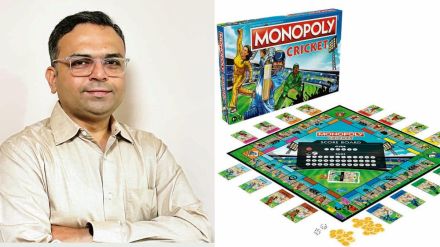The maker of Play-Doh, Monopoly and Transformers action figures, Hasbro, not known for big-bang launches, recently introduced its first developed-in-India board game,
Cricket Monopoly, amid much fanfare. Lalit Parmar, country manager for the US multinational in India, talks to Christina Moniz about the importance of timing in marketing, the company’s performance in India and the gauntlet thrown down by the unorganised sector. (Edited excerpts)
You have been in India for more than half a decade now. Has the online gaming boost slowed demand for toys?
We have done really well since our entry into the market in 2017, although we were actually present in India before that as well, albeit with a JV partner. We saw substantial growth in the first three years, after which the pandemic happened. Since then, we have seen a slightly moderate growth pace. From a distribution perspective, we are currently equally represented across e-commerce and brick-and-mortar stores. We are well distributed across the country in traditional trade or toy and novelty stores, as they are better known, particularly in urban markets. Our brands are dominant on e-commerce platforms, and are also seeing traction on quick commerce. We have also started sourcing a lot locally and our vendor base in India exports the largest quantity of toys to global markets. We are able to manufacture and retail major brands like Nerf and Monopoly here in India.
Why did you choose this time of the year when people are busy with festivities to launch Monopoly Cricket?
Since the ICC men’s World Cup is on at the moment, this was the right time for us to launch an offering that marries two fan bases – cricket fans and Monopoly fans. This is easily one of the biggest launches of the year for us. Usually most of our games and toys are designed globally but this is the first one that has been designed and developed in India with a game design firm in Bangalore. The unique thing about this game is that we have tried to retain the core elements of Monopoly but have also infused a lot of elements from cricket. It’s being sold at an attractive price point of `999 and is perfect for gifting, especially during these festive months. We expect Monopoly Cricket to be the biggest volume driver for us in the years to come.
Because it is a big launch, we are going all out to promote it with a 360-degree effort. We have a TVC that is out already on kids’ animation channels and on digital media. We’re doing a lot of in-store marketing, influencer collaborations and promotions across e-commerce. The idea is to recruit new consumers and create more fans for the Monopoly franchise too. In India, it is already the biggest-selling board game from the Hasbro portfolio. We have around 13 offerings in Monopoly.
The unorganised segment is said to account for over 70% of the Indian toy market. How big a challenge does that pose?
Yes, the unorganised market is a real challenge and there are numerous small vendors and toy manufacturers that have flooded the market. However, the branded segment is seeing a great deal of traction because parents are also increasingly seeking good quality toys for their kids. There is a lot of appreciation for games that enable better engagement and social skills. The per capita consumption of toys in our market is just about 1-2% of what it is in a market like the US, so there is still tremendous headroom for growth. Considering there are over 400 million children in the country, India is among the top three focus markets in the APAC region for Hasbro. Aside from Monopoly, brands like Jenga, Cluedo and Game Of Life are some of our best-performing games here. Toys like Nerf also perform well, since they come with global history and heritage.
Considering that urban markets contribute the larger share of your business, what steps are you taking to reach smaller markets?
Toys are not an intensively distributed category in India compared with other categories such as FMCG. That is where e-commerce plays an important role, since these players can reach nearly 99% of all pin-codes. E-commerce accounts for a decent, double-digit share of Hasbro’s sales. A good chunk of our e-commerce business comes from tier-II and III markets. Our advertising and marketing is not just limited to metros and top urban markets, so we’re seeing a growing awareness about our brands in smaller cities. Further, we have products at various price points even for our range of popular titles like Monopoly, where we offer smaller grab-and-go versions at accessible prices. Our pricing is based on extensive consumer research and market trends, and has worked well for the company.
Follow us on Twitter, Instagram, LinkedIn, Facebook
